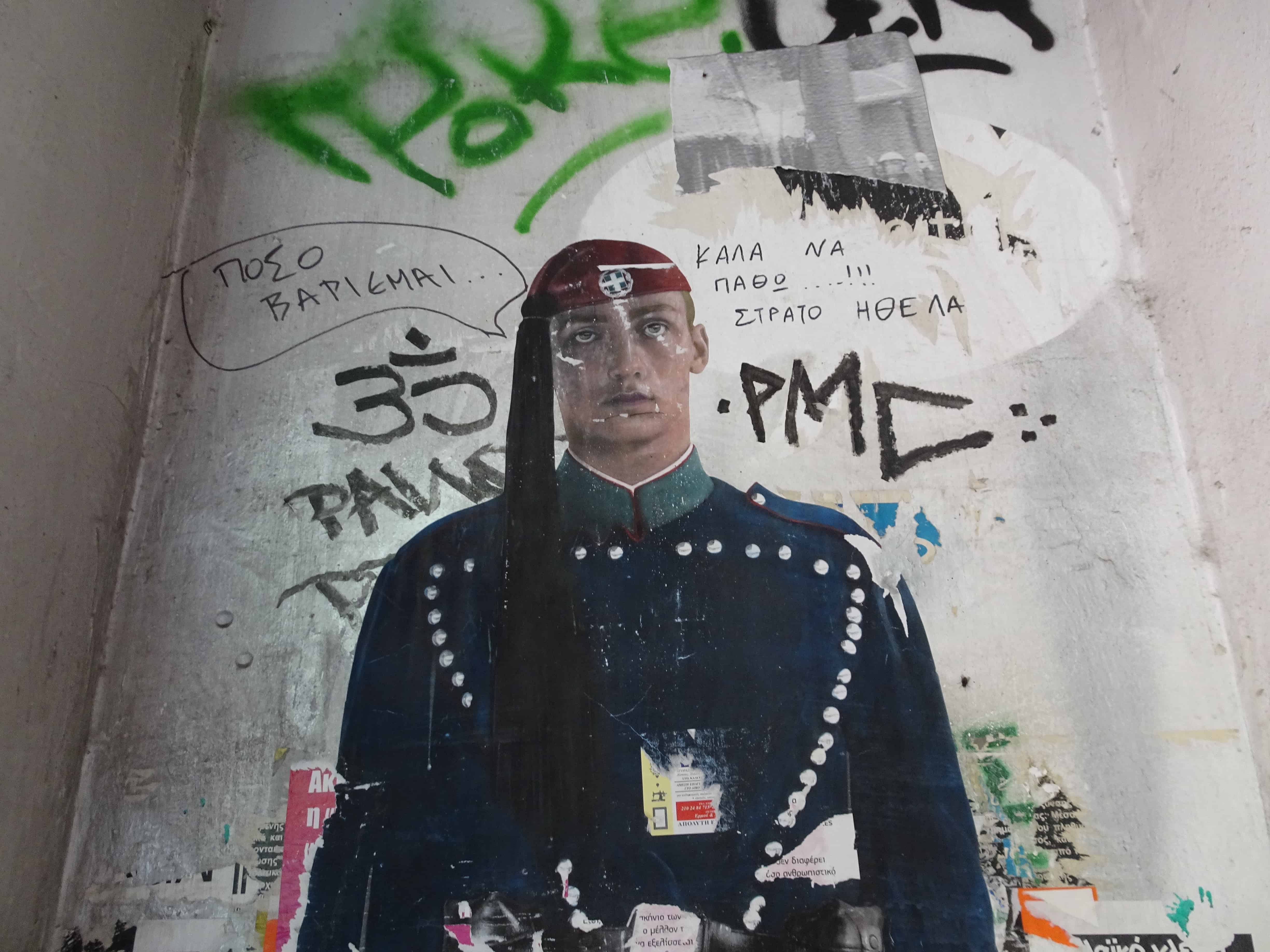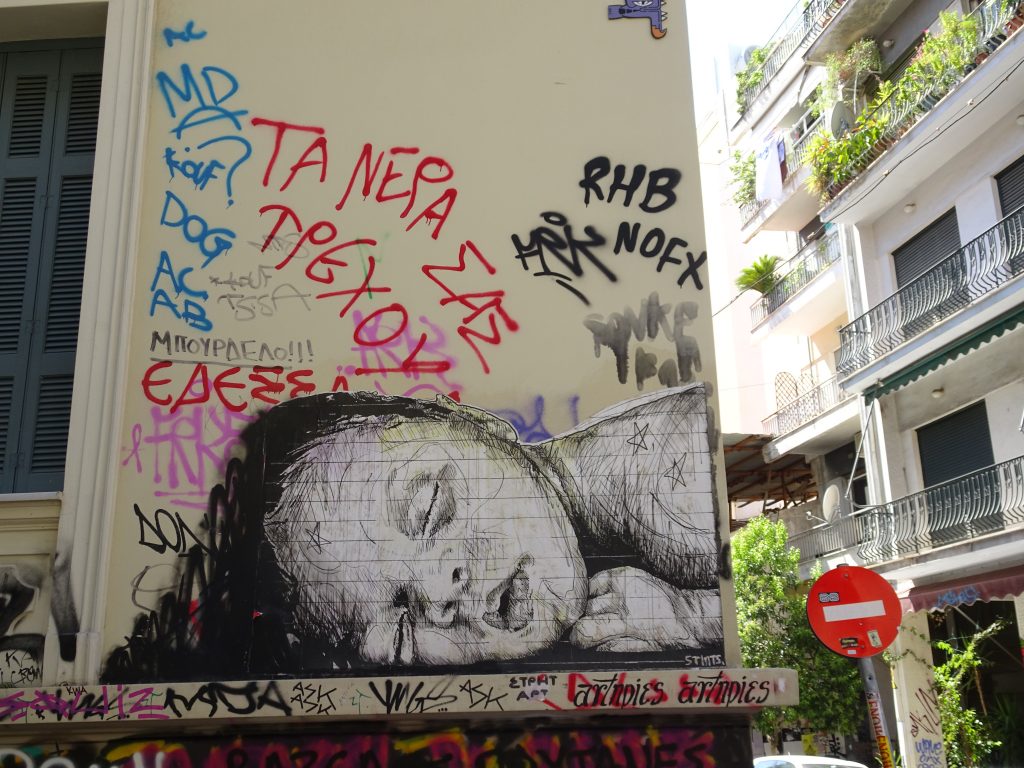
Not long ago New York City was regarded a violent metropolis, peopled by an angry and alienated youth kicking sticks in a town on the verge of bankruptcy. And yet, surprisingly, it was a golden age too going by its graffiti legacy. Between 1971 and 1975 an explosion of youthful energy re-vitalised the look of the city. Armed with magic markers and spray paints, street artists created a template for a city in crisis. Nothing was left untouched. Civic monuments, the walls of abandoned factories and the subway were fair game. The toxic smells of acrylic enamel in every colour of the rainbow were weapons and tools of choice for bombing crews, tagging to their delight.

“As with so many movements born in hard times, here were the first multi-coloured shoots in a spring of renewal,” one critic opined, as the city was transformed from a dull zone into a vibrant hub of creativity. You can easily guess where this piece is heading: Athens in the 21st century is now graffiti central, especially in Europe. Forget Paris which is too neat and tidy, and bypass Berlin whose subsidy for street art make its streets safe and unthreatening. Athens today is the cutting edge. Get there fast before its murals are erased!
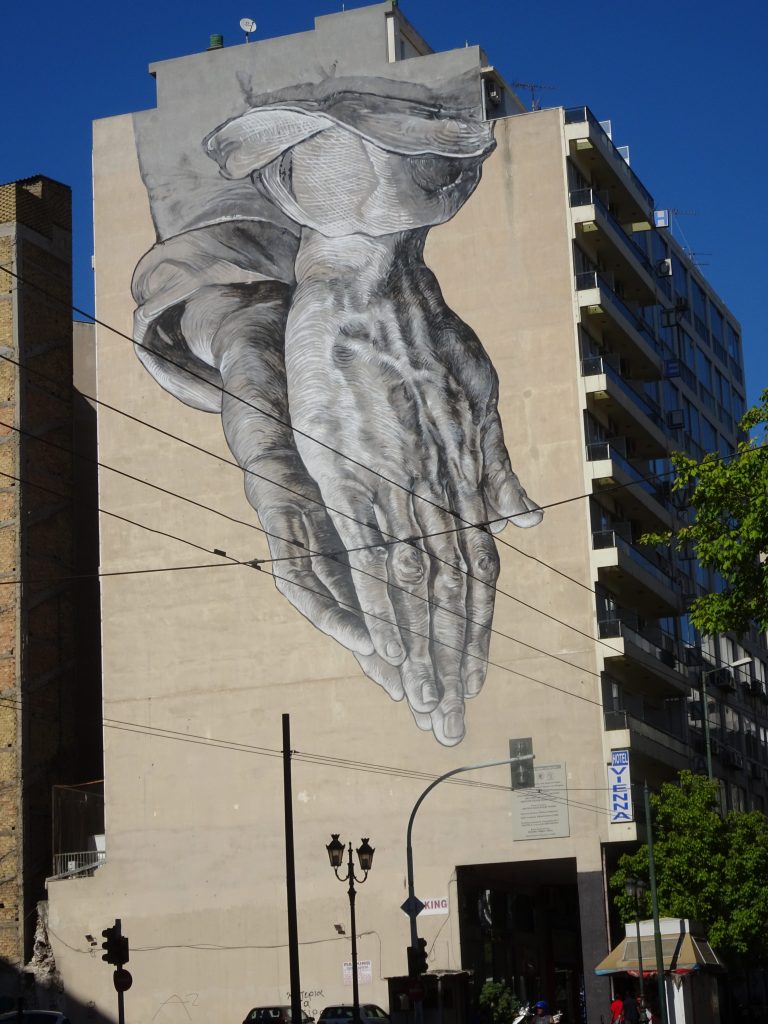
A brief tour of Athens’ amazing graffiti could include venturing into the following precincts and suburbs. From grubby Omonia head to the student enclave of Exarhia and gaze at its jazz-inspired imagery scrawled everywhere. Stencils are popular too: “Deep Down, the Junta” one such slogan across the walls of the Polytechnic, remains a warning. Then follow the walls that scream and shout “KILLTHEMALL”, or “The Road to Paradise is paved with Excess” as you arrive in Monastiraki. Here black texta scrawls swirl around kiosks, up poles, across a Byzantine church and beside the Ottoman mosque.

“Freedom to Maziotis” meanwhile demands the release of the anarchist from prison. Follow your nose down Ermou (glance at Melina Mercouri stencils) in Psyrri and you’ll find art galleries that exhibit the likes of Son Ka but also rembetiko guitarists and gas mask aliens on shop railings. Cross the road and you land in Kerameikos where superstar “INO” has illustrated the entire side of buildings: a faceless banker under a shower of euros, or the perfectly executed praying hands, pointing downwards as a sign of hope: hope lies with the people on the street, not to fancy gods above.
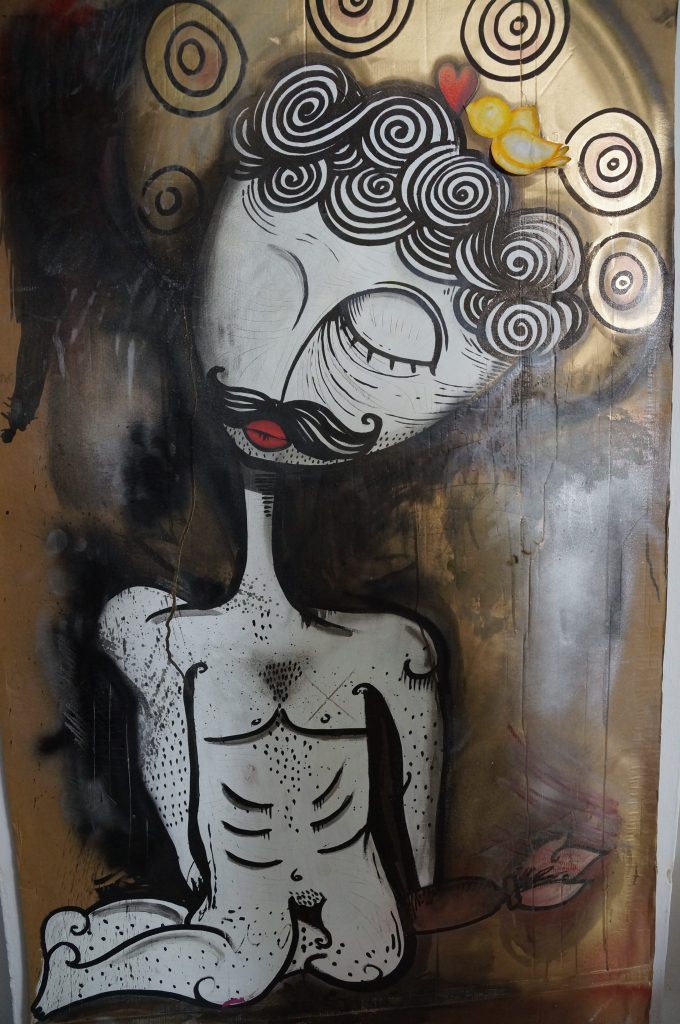
Tired of the inner city? Catch the B18 and get off at Nikaia. Each year a street art festival takes place at the Katraiko theatre. At the base of a mountain blasted to create an open arena, slabs are quickly decorated by guys with tattoos, in tune to American rap. A member of the crew ZIE, Antonis, started defacing trains in his teens but now at 23 (and old in his opinion) he complains a bag of 10 aerosols costs up to 40 euros. A monthly wage may well amount to 400 euro, so do the maths. Graffiti comes at a price!
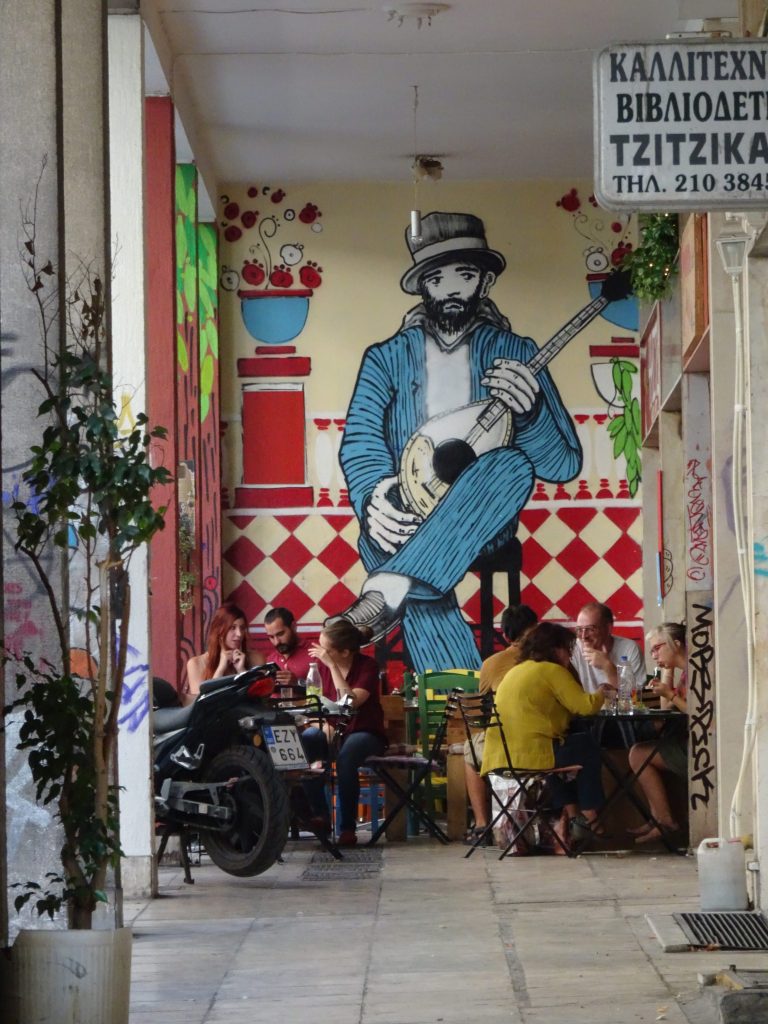
Throughout this enchanted city tags appear: GPO, Cacao Rocks, though mostly anonymous artists line the walls with jokes, political views and poetry. Heated debates still occur on the value of graffiti in Athens. Let’s leave aside defacement and destruction of buildings since they add nothing to street art. Instead you’ll find online screeds of disgust and annoyance that public expression actually occurs on private walls.
There was a recent open letter published in Ekathimerini paper writing-
“The Greek capital currently presents an image of major decline. It reminds you of futuristic movies showing cities in the ultimate stages of decay. Besides the esthetic pollution, the overall ugliness creates a broader climate of misery and a negative vibe.”

What these old fogeys forget is that graffiti can act like a valve to release pent up aggression from youths in a time of economic crisis and social dysfunction. The frisson of graffiti occurs precisely at the interface of public and private; it’s the friction between paint and surface.
Graffiti is nothing new. As one American diplomat stationed in Athens noted in 1944 “The most striking innovation remains the stupendous amount of paint which had been and was still being used, not to improve appearances, but to deface buildings and monuments and sidewalks with slogans of various kinds.”
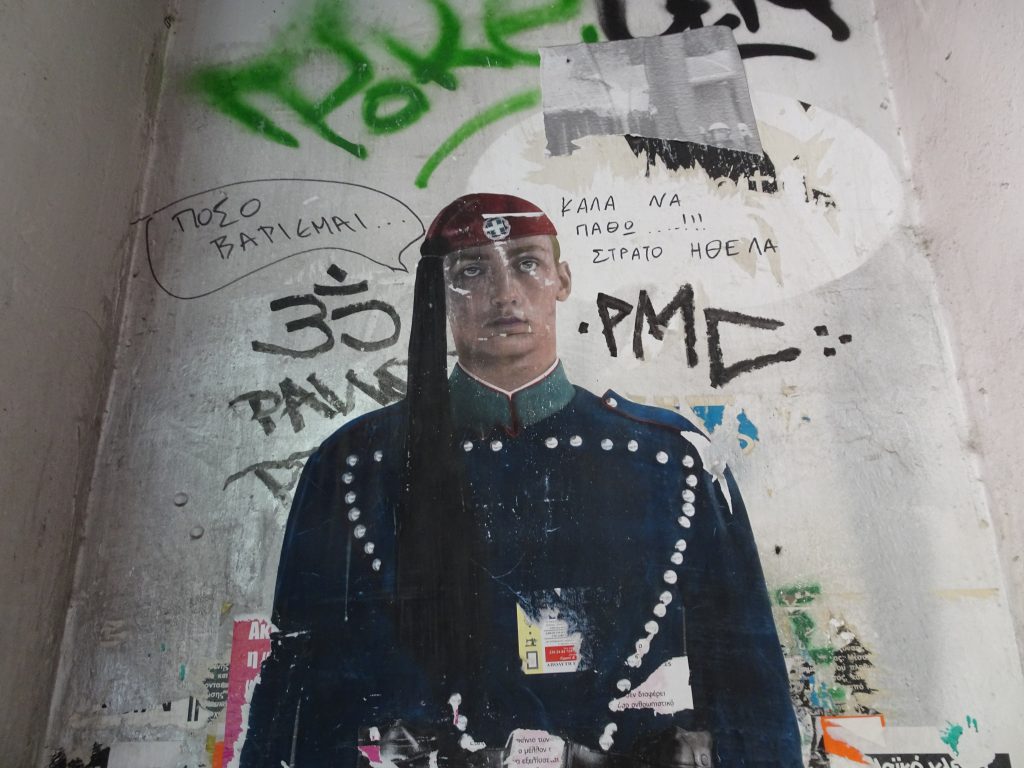
Attempts to clean up the city and rid walls of graffiti by civic authorities continue to be a Sisyphean task. In Florence, Italy they tried a new method: e-graffiti! A cathedral was constantly defaced but used e-graffiti as a deterrent against new graffiti, which was then digitally archived. Defeats the purpose don’t you think? No, forget the rest of Europe, they are sissies. Athens has the edge. Crisis is a Greek word, but so too is graffiti.

